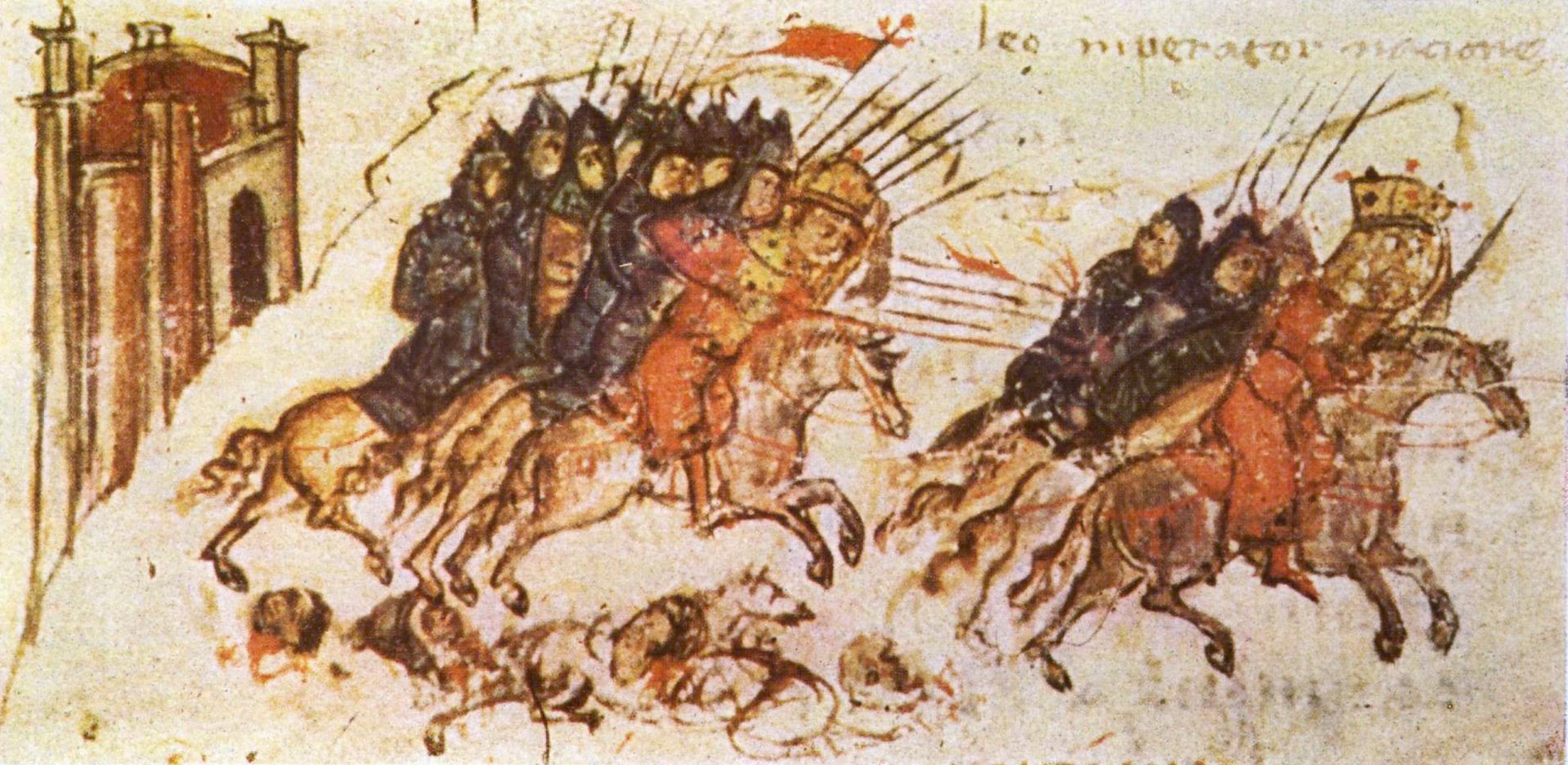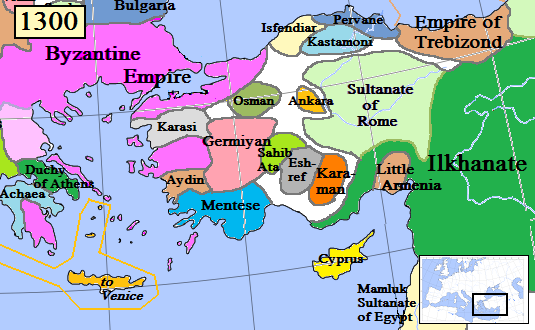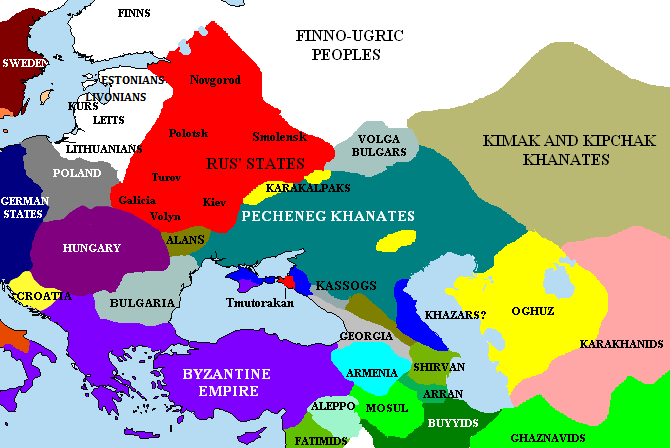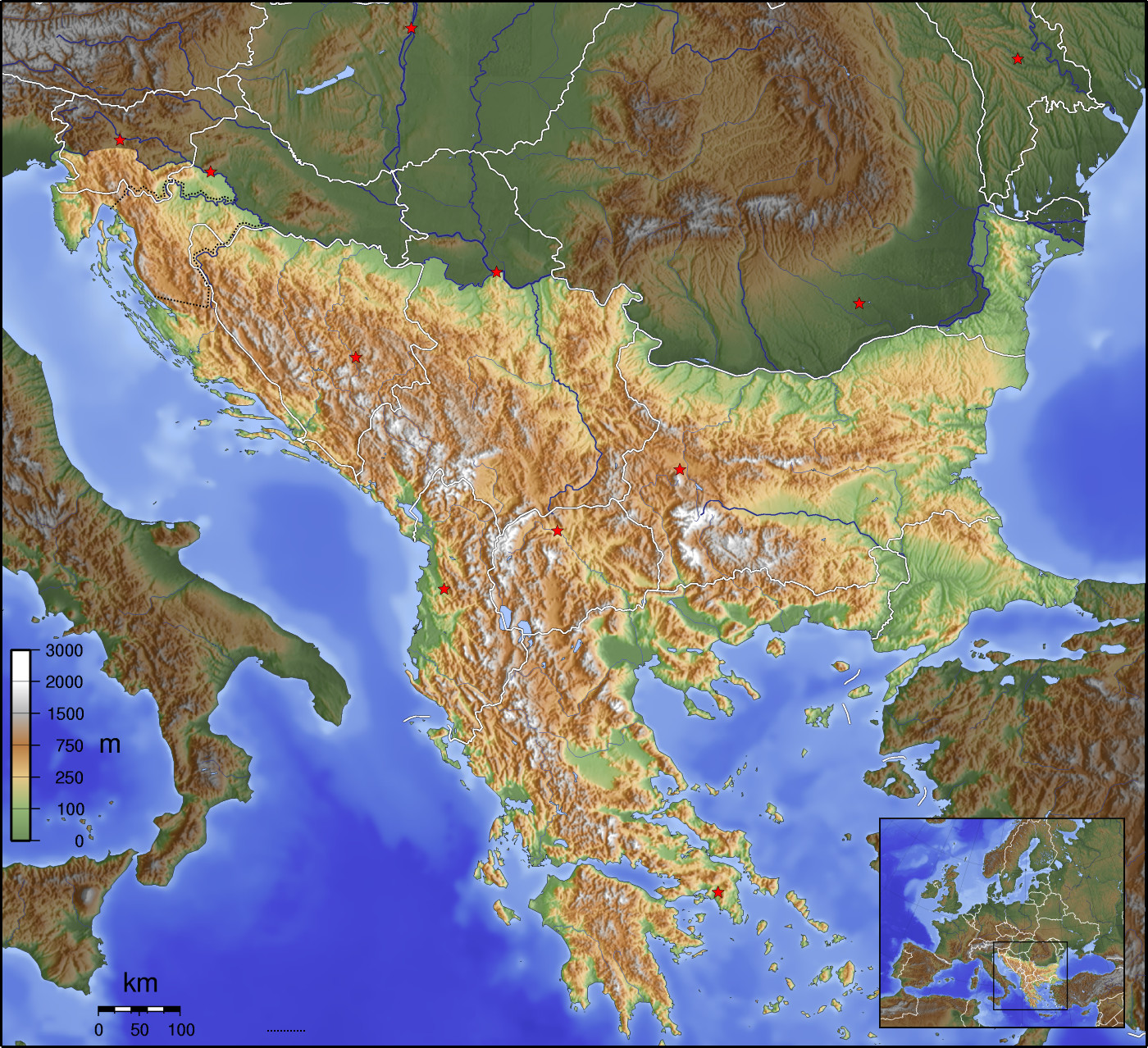|
Bulgarian Turks
Bulgarian Turks (; ) are ethnic Turkish people from Bulgaria. According to the 2021 census, there were 508,375 Bulgarians of Turkish descent, roughly 8.4% of the population, making them the country's largest ethnic minority. Bulgarian Turks also comprise the largest single population of Turks in the Balkans. They primarily live in the southern province of Kardzhali and the northeastern provinces of Shumen, Silistra, Razgrad and Targovishte. There is also a diaspora outside Bulgaria in countries such as Turkey, Austria, the Netherlands, Sweden, Norway and Romania, the most significant of which are the Bulgarian Turks in Turkey. Bulgarian Turks are the descendants of Turkish settlers who entered the region after the Ottoman conquest of the Balkans in the late 14th and early 15th centuries, as well as Bulgarian converts to Islam who became Turkified during the centuries of Ottoman rule. However, it has also been suggested that some Turks living today in Bulgaria may be ... [...More Info...] [...Related Items...] OR: [Wikipedia] [Google] [Baidu] |
Bulgars
The Bulgars (also Bulghars, Bulgari, Bolgars, Bolghars, Bolgari, Proto-Bulgarians) were Turkic peoples, Turkic Nomad, semi-nomadic warrior tribes that flourished in the Pontic–Caspian steppe and the Volga region between the 5th and 7th centuries. They became known as Eurasian nomads, nomadic equestrians in the Volga-Ural region, but some researchers trace Bulgar ethnic roots to Central Asia. During their westward migration across the Eurasian Steppe, the Bulgar tribes absorbed other tribal groups and cultural influences in a process of ethnogenesis, including Iranian peoples, Iranic, Finno-Ugric peoples, Finno-Ugric, and Huns, Hunnic tribes. The Bulgars spoke a Turkic languages, Turkic language, the Bulgar language of the Oghur languages, Oghuric branch. They preserved the military titles, organization, and customs of Eurasian steppes as well as pagan shamanism and belief in the sky deity Tengri, Tangra. The Bulgars became semi-sedentary during the 7th century in the Pontic- ... [...More Info...] [...Related Items...] OR: [Wikipedia] [Google] [Baidu] |
Shumen Province
Shumen Province (, transliterated ''Oblast Shumen'', former name Shumen okrug) is a province in northeastern Bulgaria named after its main city Shumen. It is divided into ten municipalities with a total population, as of December 2009, of 194,090 inhabitants. The Main City The city of Shumen is famous in the region for the Monument to 1300 Years of Bulgaria. The monument is in the cubist style and is 1300 steps (each step representing a year) above the center of the town. Other places of note are the Shumen fortress, Tombul Mosque, and Shumen Plato National park. The center of the town has a historical museum, large library, and large theater. The municipality building, also in the center, has a concert hall that features regular symphony performances. Shumen is also the location of the Shumensko Brewery, a popular beer in Bulgaria. The area surrounding Shumen plays a significant part in Bulgarian History with the first and second capitols of historical Bulgaria withi ... [...More Info...] [...Related Items...] OR: [Wikipedia] [Google] [Baidu] |
Nevşehir
Nevşehir (; from 'new' and 'city') is a city in the Central Anatolia Region of Turkey. It is the seat of Nevşehir Province and Nevşehir District.İl Belediyesi Turkey Civil Administration Departments Inventory. Retrieved 22 May 2023. Its population is 128,290 (2024). It is from the capital Ankara and lies within the historical region of Cappadocia. Nevşehir Province, Nevşehir was declared a World Peace City by the United Nations. The town lies at an elevation of and has a continental climate, with heavy snow in winter and great heat in summer. Although Nevşehir is close to the underground cities, fairy chimneys, monasteries, caravanserais and rock-hewn churches of Cappadocia, and has a few hotels, the modern town is not itself a tourist centre. In 2015 a huge underground city was discovered ... [...More Info...] [...Related Items...] OR: [Wikipedia] [Google] [Baidu] |
Konya Vilayet
The Vilayet of Konya () was a first-level administrative division (vilayet) of the Ottoman Empire in Asia Minor which included the whole, or parts of, the ancient regions of Pamphylia, Pisidia, Phrygia, Lycaonia, Cilicia and Cappadocia. Demographics At the beginning of the 20th century, Konya Vilayet reportedly had an area of 91,620 km2, while the preliminary results of the first Ottoman census of 1885 (published in 1908) gave the population as 1,088,100.Asia by , page 459 The accuracy of the population figures ranges from "approximate" to "merely conjectural" depending on the region from which they were gathered. As of 1920, less than 10% of the population was described as being |
Karamanids
The Karamanids ( or ), also known as the Emirate of Karaman and Beylik of Karaman (), was a Turkish people, Turkish Anatolian beyliks, Anatolian beylik (principality) of Salur tribe origin, descended from Oghuz Turks, centered in South-Central Anatolia around the present-day Karaman Province. From the mid 14th century until its fall in 1487, the Karamanid dynasty was one of the most powerful beyliks in Anatolia. states and territories disestablished in the 1480s History The Karamanids traced their ancestry from Hodja Sad al-Din and his son Nure Sofi, Nure Sufi Bey, who emigrated from Arran (Caucasus), Arran (roughly encompassing modern-day Azerbaijan) to Sivas because of The Mongol Invasions, the Mongol invasion in 1230. The Karamanids were members of the Salur tribe of Oghuz Turks. According to others, they were members of the Afshar tribe,Cahen, Claude, ''Pre-Ottoman Turkey: A General Survey of the Material and Spiritual Culture and History c. 1071–1330'', trans. J. Jone ... [...More Info...] [...Related Items...] OR: [Wikipedia] [Google] [Baidu] |
Cuman
The Cumans or Kumans were a Turkic nomadic people from Central Asia comprising the western branch of the Cuman–Kipchak confederation who spoke the Cuman language. They are referred to as Polovtsians (''Polovtsy'') in Rus' chronicles, as "Cumans" in Western sources, and as " Kipchaks" in Eastern sources. Related to the Pecheneg, they inhabited a shifting area north of the Black Sea and along the Volga River known as Cumania, from which the Cuman–Kipchaks meddled in the politics of the Caucasus and the Khwarazmian Empire. The Cumans were fierce and formidable nomadic warriors of the Eurasian Steppe who exerted an enduring influence on the medieval Balkans. They were numerous, culturally sophisticated, and militarily powerful. Many eventually settled west of the Black Sea, influencing the politics of Kievan Rus', the Galicia–Volhynia Principality, the Golden Horde Khanate, the Second Bulgarian Empire, the Kingdom of Serbia, the Kingdom of Hungary, Moldavia, t ... [...More Info...] [...Related Items...] OR: [Wikipedia] [Google] [Baidu] |
Oghuz Turks
The Oghuz Turks ( Middle Turkic: , ) were a western Turkic people who spoke the Oghuz branch of the Turkic language family. In the 8th century, they formed a tribal confederation conventionally named the Oghuz Yabgu State in Central Asia. Today, much of the populations of Turkey, Azerbaijan and Turkmenistan are descendants of Oghuz Turks. The term Oghuz was gradually supplanted by the terms Turkmen and Turcoman ( or ''Türkmân'') by the 13th century.Lewis, G. ''The Book of Dede Korkut''. Penguin Books, 1974, p. 10. The Oghuz confederation migrated westward from the Jeti-su area after a conflict with the Karluk allies of the Uyghurs. In the 9th century, the Oghuz from the Aral steppes drove Pechenegs westward from the Emba and Ural River region. In the 10th century, the Oghuz inhabited the steppe of the rivers Sari-su, Turgai and Emba north of Lake Balkhash in modern-day Kazakhstan. They embraced Islam and adapted their traditions and institutions to the Islam ... [...More Info...] [...Related Items...] OR: [Wikipedia] [Google] [Baidu] |
Pecheneg
The Pechenegs () or Patzinaks, , Middle Turkic: , , , , , , ka, პაჭანიკი, , , ; sh-Latn-Cyrl, Pečenezi, separator=/, Печенези, also known as Pecheneg Turks were a semi-nomadic Turkic people from Central Asia who spoke the Pecheneg language. In the 9th and 10th centuries, the Pechenegs controlled much of the steppes of southeast Europe and the Crimean Peninsula. In the 9th century the Pechenegs began a period of wars against Kievan Rus', and for more than two centuries launched raids into the lands of Rus', which sometimes escalated into full-scale wars. Ethnonym The Pechenegs were mentioned as ''Bjnak'', ''Bjanak'' or ''Bajanak'' in medieval Arabic and Persian texts, as ''Be-ča-nag'' in Classical Tibetan documents, and as ''Pačanak-i'' in works written in Georgian. Anna Komnene and other Byzantine authors referred to them as ''Patzinakoi'' or ''Patzinakitai''. In medieval Latin texts, the Pechenegs were referred to as ''Pizenaci'', '' ... [...More Info...] [...Related Items...] OR: [Wikipedia] [Google] [Baidu] |
Bulgarians
Bulgarians (, ) are a nation and South Slavs, South Slavic ethnic group native to Bulgaria and its neighbouring region, who share a common Bulgarian ancestry, culture, history and language. They form the majority of the population in Bulgaria, while in Bulgarians in North Macedonia, North Macedonia, Bulgarians in Ukraine, Ukraine, Bessarabian Bulgarians, Moldova, Bulgarians in Serbia, Serbia, Bulgarians in Albania, Albania, Bulgarians in Romania, Romania, Bulgarians in Hungary, Hungary and Bulgarians in Greece, Greece they exist as historical communities. Etymology Bulgarians derive their ethnonym from the Bulgars. Their name is not completely understood and difficult to trace back earlier than the 4th century AD, but it is possibly derived from the Proto-Turkic word ''*bulģha'' ("to mix", "shake", "stir") and its derivative ''*bulgak'' ("revolt", "disorder"). Alternative etymologies include derivation from a compound of Proto-Turkic (Oghuric languages, Oghuric) ''*bel'' ("fi ... [...More Info...] [...Related Items...] OR: [Wikipedia] [Google] [Baidu] |
Balkans
The Balkans ( , ), corresponding partially with the Balkan Peninsula, is a geographical area in southeastern Europe with various geographical and historical definitions. The region takes its name from the Balkan Mountains that stretch throughout the whole of Bulgaria. The Balkan Peninsula is bordered by the Adriatic Sea in the northwest, the Ionian Sea in the southwest, the Aegean Sea in the south, the Turkish straits in the east, and the Black Sea in the northeast. The northern border of the peninsula is variously defined. The highest point of the Balkans is Musala, , in the Rila mountain range, Bulgaria. The concept of the Balkan Peninsula was created by the German geographer August Zeune in 1808, who mistakenly considered the Balkan Mountains the dominant mountain system of southeastern Europe spanning from the Adriatic Sea to the Black Sea. In the 19th century the term ''Balkan Peninsula'' was a synonym for Rumelia, the parts of Europe that were provinces of the Ottoman E ... [...More Info...] [...Related Items...] OR: [Wikipedia] [Google] [Baidu] |
Ottoman Empire
The Ottoman Empire (), also called the Turkish Empire, was an empire, imperial realm that controlled much of Southeast Europe, West Asia, and North Africa from the 14th to early 20th centuries; it also controlled parts of southeastern Central Europe, between the early 16th and early 18th centuries. The empire emerged from a Anatolian beyliks, ''beylik'', or principality, founded in northwestern Anatolia in by the Turkoman (ethnonym), Turkoman tribal leader Osman I. His successors Ottoman wars in Europe, conquered much of Anatolia and expanded into the Balkans by the mid-14th century, transforming their petty kingdom into a transcontinental empire. The Ottomans ended the Byzantine Empire with the Fall of Constantinople, conquest of Constantinople in 1453 by Mehmed II. With its capital at History of Istanbul#Ottoman Empire, Constantinople (modern-day Istanbul) and control over a significant portion of the Mediterranean Basin, the Ottoman Empire was at the centre of interacti ... [...More Info...] [...Related Items...] OR: [Wikipedia] [Google] [Baidu] |
Bulgarian Turks In Turkey
The Bulgarian Turks in Turkey represent a community of Bulgarian Turks who immigrated over the years from Bulgaria to Turkey. They are notable in Turkey for being descendants of Balkan Turks who had to escape persecution. And moreover, part of them continue to be dual citizens of Bulgaria and Turkey, which makes them a natural bridge between the two countries. Origins Bulgarian Turks are descendants of Asian settlers who came across the narrows of the Dardanelles and the Bosporus following the Ottoman conquest of the Balkans in the late 14th and early 15th centuries, as well as Bulgarian converts to Islam who became Turkified during the centuries of Ottoman rule in Bulgaria. It has also been suggested that some Turks living today in Bulgaria may be direct ethnic descendants of earlier medieval Pecheneg, Oğuz, and Cuman Turkic tribes.Nicole 1990, pp.45Norris, ''Islam in the Balkans'', pp. 146-47. The Turkish community became an ethnic minority when the Principality of Bulg ... [...More Info...] [...Related Items...] OR: [Wikipedia] [Google] [Baidu] |







